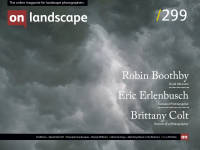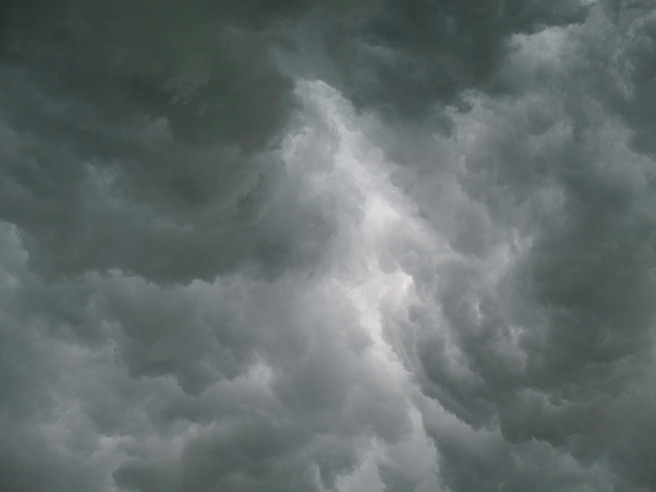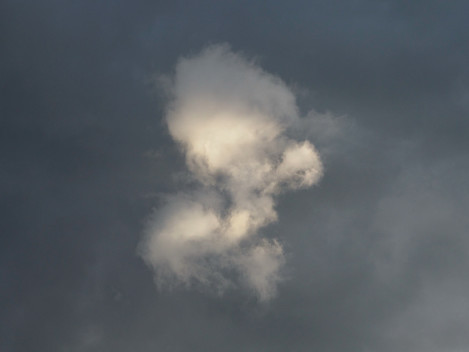Teachings of Zen Buddhism

Robin Boothby
Retired metallurgist, based in Oxfordshire, employing a camera to escape through a portal that leads directly from the fabricated world in which we live to a world of natural wonders.
In this series of three articles, my intention is to examine some ideas about the practise of landscape photography in the light of the teachings of Zen Buddhism. The words ‘Zen’ and ‘photography’ used in conjunction inevitably lead to a consideration of the work of Minor White and his ideas about photographic ‘equivalence’, which originated with Alfred Stieglitz. Ansel Adams (who also embraced the concept of equivalence) and Edward Weston (who had different ideas) were also important figures in the development of Minor White’s thinking. All four photographers had met each other at some point in their lives.
Zen teachings can be notoriously difficult to comprehend, often appearing to be self-contradictory (because differing points of view may be expressed) and/or paradoxical (because their intent is to discourage conceptual thinking), so I don’t intend to dive in too deeply. Instead, I’m going to focus on what Stieglitz, Adams and White (and various photography critics) had to say about equivalents and what Weston said about his alternative viewpoint and see where that leads. Stieglitz is the main subject of this first article, but to provide some background, I will begin with a quick diversion to outline how Zen was transplanted from the Orient to America.
Significant migration from China to California occurred during the gold rush from about 1850 onwards.1 Although numerous Chinese temples were subsequently built along the west coast, these were a reflection of popular Chinese religious culture, which was a mixture of Taoism, Confucianism and Buddhism that differed substantially from Zen. Some limited migration from Japan to Hawaii was allowed in the 1860s, but large-scale migration from Japan to mainland USA did not take place until around 1900.1
Another of Soyen’s students, Nyogen Senzaki, had travelled with him to San Francisco in 1905. Senzaki remained in California after Soyen’s departure but, under strict instructions not to teach for twenty years, he did not start to give public addresses until 1925.1,2 A second group of Zen Buddhists arrived in San Francisco in 1907; all but one eventually left, but Sokei-an, who remained, walked across the Shasta Mountains to Oregon in 1911, before moving on to Seattle and reached New York in 1916. Sokei-an went back to Japan to complete his studies in 1919, then returned to New York in 1928 to teach and founded the Buddhist Society of America in 1930.1
There is no evidence to suggest that Stieglitz (based in New York) or Weston and Adams (both based in California) had any direct involvement with Zen, but given the circles that they moved in, it is likely that they would have had some awareness of it by the time of the 1920s/30s. (For example, Stieglitz’s circle included Ananda Coomaraswamy, curator of Indian art at Boston Museum of Fine Arts, who published a book on Buddhism, including a chapter on Zen in 1916.4) My intent here is not to argue that they were influenced by Zen but rather to examine to what extent their ideas about photography and the nature of reality were consistent with it.
Alfred Stieglitz began to photograph clouds in 1922, by which time he was in his late 50s. The following year, he published an article on How I Came to Photograph Clouds, setting out his motives for doing this. “Clouds and their relationship to the rest of the world, and clouds for themselves, interested me,” he wrote and “I wanted to photograph clouds to find out what I had learned in 40 years about photography. Through clouds to put down my philosophy of life.”5 Stieglitz initially likened his series of cloud images to pieces of music (‘Songs of the Sky’) before settling on the term ‘equivalents’.
What precisely Stieglitz’s equivalents were intended to express remains a matter of conjecture among photography critics and scholars. The prevailing view is that the equivalents are meant to be understood metaphorically — as symbols for something not directly seen, i.e. a divine or spiritual presence or the photographer’s personal thoughts and feelings. In her influential book On Photography, Susan Sontag simply wrote that Stieglitz’s equivalents were “statements of his inner feelings.”6 Kristina Wilson, however, drawing on Stieglitz’s experiences running an art gallery (The Intimate Gallery in New York) during much of the period when the equivalents were made, gave precedence to the spiritual rather than the psychological aspects of his inner life. Although much of Wilson’s argument was based around the work of the artists that Stieglitz represented, she considered that both the gallery and the equivalents were intended to induce a spiritual experience of “oneness with humanity and the universe.”7
Rosalind Krauss stressed the importance of the crop in photography, arguing that the cloud equivalents signified “the absence ... of the world and its objects, supplanted by the presence of the sign.”8 Kate Stanley though argued to the contrary that “as symbolic fragments of the sky, Stieglitz’s equivalents conjure the ‘whole’ from which they are cut ... emphasising the air that enjoins cloud to cloud, cloud to photograph ... photograph to viewer, and viewer to cloud, palpably and infinitely.”9
John Szarkowski found the notion that the equivalents represented Stieglitz's philosophy of life deeply unsatisfactory because such a claim was unverifiable and also implied that “we are interested in Stieglitz not because he gave us the pictures, but the converse: we are interested in the pictures because they give us Stieglitz.”10 Szarkowski then referred to an observation that John Ruskin had made in 1856 about poets, paraphrasing Ruskin’s words thus: “there are three types of sensibility: to the first a primrose is simply and unambiguously a primrose; to the second it is not a primrose but something else, perhaps a forsaken maiden; to the third it can contain many other meanings without ceasing to be entirely a primrose.” Szarkowski stated that in Ruskin’s view the greatest poets were of the third kind. Ruskin’s meaning though was a little more nuanced. He did state that “in general, these three classes may be rated in comparative order, as the men who are not poets at all, and the poets of the second order, and the poets of the first.” But he added that the two orders of poet that he recognised “must [both] be first-rate in their range, though their range is different; and with poetry second-rate in quality no-one ought to be allowed to trouble mankind.” The second order of poets he called the ‘Reflective or Perceptive’ (which included Wordsworth and Keats, for example) and the first order he termed the ‘Creative’ (including Shakespeare and Dante).11
Remarkably similar sentiments to Ruskin’s three types of sensibility were expressed by Edward Weston in a letter sent to Minor White commenting on a draft of a paper that the latter had written about Weston’s photography.12 (I suspect that this was the unpublished paper, written around the time of Weston’s exhibition in New York in 1946, that White referred to when interviewed by Paul Hill and Thomas Cooper in 1975.13) Weston expressed his feelings on White’s draft by quoting a version of an old Zen saying:
To a man who knows nothing, mountains are mountains, waters are waters, and trees are trees. But when he has studied and knows a little, mountains are no longer mountains, waters are no longer waters, and trees are no longer trees. But when he has thoroughly understood, mountains are once again mountains, waters are waters, and trees are trees.
Detailed explications of the ‘mountains are mountains’ discourse have been given by the Zen scholar Masao Abe14 and the Buddhist monk Thich Nhat Hanh.15 In essence, at the first level of understanding, mountains, waters, and trees are all differentiated, and it is oneself that makes these distinctions; the self too is differentiated, giving rise to the question “Who am I?” and then to query “Who is asking ‘Who am I’?” and so on.
Regarding clouds, Thich Nhat Hanh wrote, “If you are a poet, you will see clearly there is a cloud floating in this sheet of paper. Without a cloud there will be no rain; without rain the trees cannot grow; and without trees we cannot make paper ... Everything [time, space, the earth, the rain, the minerals in the soil, the sunshine, the cloud ...] co-exists with this sheet of paper.”16
Clearly, from a Zen perspective, we can equate Stieglitz’s clouds for themselves with mountains as mountains, clouds representing his philosophy of life to mountains are no longer mountains, and clouds and their relationship to the rest of the world with mountains are again mountains. Although it seems unlikely that Stieglitz would have been aware of it, it is worth noting that the Buddhist term that is rendered in English as ‘emptiness’ is a translation of the Chinese characters for ‘sky-like’2 so cloud images would be a very apt metaphor for expressing the empty nature of all things.
Stieglitz’s own words are perhaps more revealing about his approach to photography than is generally acknowledged in some critical appraisals of his work. In 1925, during the period the cloud equivalents were made, Stieglitz wrote to the artist Arthur Dove, saying, “So far the summer has been unproductive ... I have a print or two ... and I haven’t the slightest idea what they express!” [cited by Szarkowski10].
Stieglitz later admitted to an emotional aspect of his photography. In Ansel Adams’ autobiography, he recalled that when he first met Stieglitz in 1933, he asked him what he meant by ‘creative photography’18. Stieglitz replied, “I have the desire to photograph. I go out with my camera. I come across something that excites me emotionally, spiritually, aesthetically. I see the photograph in my mind’s eye and I compose and expose the negative. I give you the print as the equivalent of what I saw and felt.”
Dorothy Norman wrote that Stieglitz “might easily be thought of in terms of existentialism, or Zen Buddhism since what preoccupied him most was the reality of experience itself”, though Stieglitz himself said, “I seem to be claimed by every ist. Yet, no ism in itself has any final meaning for me. All isms contain some measure of truth ... I suppose that if I can be said to subscribe to any ism whatever, it may be that I am simply a fatalist.”17
It is not entirely clear to me whether, in Ruskin’s terminology, Stieglitz would be considered a ‘creative’ or a ‘reflective/perceptive’ photographer (though Szarkowski’s implication was the latter).
I would also add that the insight that ‘mountains are mountains’ is not the sole preserve of Zen. Similar sentiments were expressed, for example, by Nan Shepherd in The Living Mountain: “... the mountain is one and indivisible, and rock, soil, water and air are no more integral to it than what grows from the soil and breathes the air. All are aspects of one entity, the living mountain. The disintegrating rock, the nurturing rain, the quickening sun, the seed, the root, the bird – all are one.”19
Mountains are mountains, primroses are primroses, clouds are clouds, and, as will be discussed in the follow-up article, The Thing Itself, Edward Weston’s rocks are rocks, and his peppers are peppers.
Acknowledgement
I am deeply grateful to Roy Money for providing details of Reference 12 and helpful comments on an earlier draft of this article.
References
- Rick Fields, How the Swans Came to the Lake, (Shambala Publications, Boulder, Colorado, 1981).
- Helen Tworkov, Zen in America, (Kodansha America Inc., New York, 1984), Introduction, pp.3-20.
- Soyen Shaku, Zen for Americans, translated by D.T. Suzuki, (The Open Court Publishing Company, Chicago, 1906).
- Ananda Coomaraswamy, Buddha and The Gospel of Buddhism, (G.P. Putnam’s Sons, New York, 1916), pp.252-258.
- Alfred Stieglitz, How I Came to Photograph Clouds, The Amateur Photographer & Photography, vol.56, no.1819 (1923), p.255.
- Susan Sontag, On Photography, (Penguin Modern Classics, 1977), p.123.
- Kristina Wilson, The Intimate Gallery and the Equivalents: Spirituality in the 1920s Work of Stieglitz, Art Bulletin vol.85, no.4 (Dec. 2003), pp.746-768.
- Rosalind Krauss, Stieglitz/Equivalents, October, vol. 11 (Winter 1979), pp. 129-140.
- Kate Stanley, Unrarified Air: Stieglitz and the Modernism of Equivalence, Modernism/modernity, vol.26, no.1 (Jan 2019), pp.185-212.
- John Szarkowski, The Sky Pictures of Alfred Stieglitz, MoMA no.20 (Autumn 1995), pp.15-17.
- John Ruskin, Modern Painters, Vol.III (Containing Part IV: Of Many Things), Chapter 12: Of The Pathetic Fallacy.
- Edward Weston, carbon copy of letter to Minor White, (Weston Archive, Center for Creative Photography), cited by Amy Conger in Edward Weston: The Spirit of Zen from Lao-tse to Louis Armstrong, unpublished lecture at Huntington Library, San Marino, CA, (Sept. 2002). (Lecture cited by Roy Money, https://theawakenedeye.com/pages/minor-white-and-the-quest-for-spirit/ )
- Paul Hill and Thomas Cooper, Dialogue with Photography, (Dewi Lewis Publishing, 2005), pp.267-268.
- Masao Abe, Zen and Western Thought, (MacMillan Press, 1985), pp.4-18.
- Thich Nhat Hanh, Mountains are Mountains and Rivers are Rivers, in Zen Keys (Anchor Books, 1974), pp.71-88.
- Thich Nhat Hanh, The Heart of Understanding, (Parallax Press, 1988), pp.3-5.
- Dorothy Norman, The Equivalents, Aperture (Spring 1960).
- Ansel Adams and Mary Street Alinder, An Autobiography, (Little, Brown and Company,1985), p.78.
- Nan Shepherd, The Living Mountain, (Canongate Books, 2014; first published 1977), Chapter 7: Life: The Plants, p.48.

















